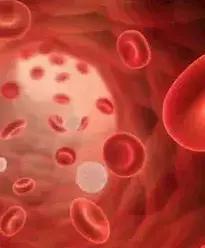Article
Iomab-B Continues to Showcase Impressive Bone Marrow Transplant and Engraftment Rate in Relapsed/Refractory AML
Author(s):
Iodoine apamistamab, a radiotherapy that targets CD45-expressing cells, demonstrated a 100% bone marrow transplant and engraftment rate in patients with relapsed/refractory acute myeloid leukemia vs 18% for those who received a physician’s choice of salvage treatment.

Iodoine (I-131) apamistamab (Iomab-B), a radiotherapy that targets CD45-expressing cells, demonstrated a 100% bone marrow transplant (BMT) and engraftment rate in patients with relapsed/refractory acute myeloid leukemia vs 18% for those who received a physician’s choice of salvage treatment, according to findings from the phase 3 SIERRA trial that were presented during the 2021 Society of Nuclear Medicine and Molecular Imaging (SNMMI) Annual Meeting.
Additionally, data showed that 79% of all patients, who were typically age 55 years and older and typically not eligible for BMT with standard approaches, who were enrolled on the study could proceed onto BMT.
"Our enthusiasm for Iomab-B continues to grow at every safety and feasibility update from the pivotal phase 3 SIERRA trial,” said Mark Berger, MD, chief medical officer of Actinium, the developer of Iomab-B, in a news release. “With consistently strong engraftment data through 75% of patient enrollment, we believe Iomab-B has the potential to unlock a paradigm shift in the treatment of patients with relapsed and refractory AML. Despite 9 approved drugs for patients with AML since 2017, many of which are targeted agents, AML remains one of the most difficult to treat blood cancers with the lowest 5-year survival rate. In developing Iomab-B our goal is to improve patient outcomes by enabling potentially curative BMT for a large portion of the AML patient population."
The results, which were previously announced in December 2020, are from the first 75% of patients enrolled on the trial.
Iomab-B is designed to deliver high amounts of radiation that is targeted to bone marrow while minimally impacting other organs; this conditioning regimen leads to lower rates and severity of adverse events.
The SIERRA trial is a phase 3, randomized study of patients with relapsed/refractory AML who are 55 years and older and were treated with Iomab-B (n = 56) or physician’s choice of salvage therapy (n = 57). The median age was 64 years (range, 55-77), and most patients (62%) had adverse cytogenetic and molecular risk.
In the intent-to-treat group, additional results showed that 88% of patients on Iomab-B (n = 49/56) were transplanted compared with 18% who achieved a complete response (CR) and received standard BMT (n = 10/57) and 64% who were randomized to conventional care and then crossed over to receive Iomab-B with hematopoietic cell transplant (HCT; n = 30/47).
The median rates of marrow blast at randomization were 29% (range, 4-95), 20% (range, 5-97), and 28% (range, 6-87) for those who received Iomab-B, those who had a CR and received standard HCT, and those on conventional care and cross over to Iomab-B with HCT.
In the Iomab-B arm, the number of days to absolute neutrophil engraftment (ANC) engraftment was 14 (range, 9-22), the number of days to platelet engraftment was 18 (range, 4-39), and the number of days to HCT post-randomization was 30 (range, 23-60). The myeloablative dose delivered to bone marrow was 14.7 Gv (range, 4.6-32)/646 mCi (range, 354-1027). Four percent of patients had reported non-relapse, transplant-related mortality (n = 2/45 evaluable).
In the conventional care arm of patients who achieved a CR and received standard HCT, the number of days to ANC and platelet engraftment was 17 (range, 13-83) and 22 (range, 8-35), respectively; the number of days to HCT post-randomization was 67 (range, 52-104). Twenty percent of patients in this group experienced 100-day non-relapsed transplant-related mortality (n = 2/10 evaluable).
Finally, in the group of patients randomized to conventional care and then crossed over to received Iomab-B with HCT, the number of days to ANC engraftment, platelet engraftment, and HCT post randomization was 14 (range, 10-37), 19 (range, 1-38), and 62 (range, 36-100). The myeloablative dose delivered to bone marrow was 15.5 Gv (6.3-42)/592 mCi (range 313-1013). A total 10.7% of patients had 100-day non-relapse transplant-related mortality (n = 3/28 evaluable).
Reference
- Pivotal phase 3 SIERRA trial data showing 100% bone marrow transplant engraftment in patients treated with iomab-b presented at the 2021 Virtual SNMMI Conference. News release. Actinium Pharmaceuticals, Inc. June 15, 2021. Accessed June 15, 2021. https://bit.ly/3wsvu65









